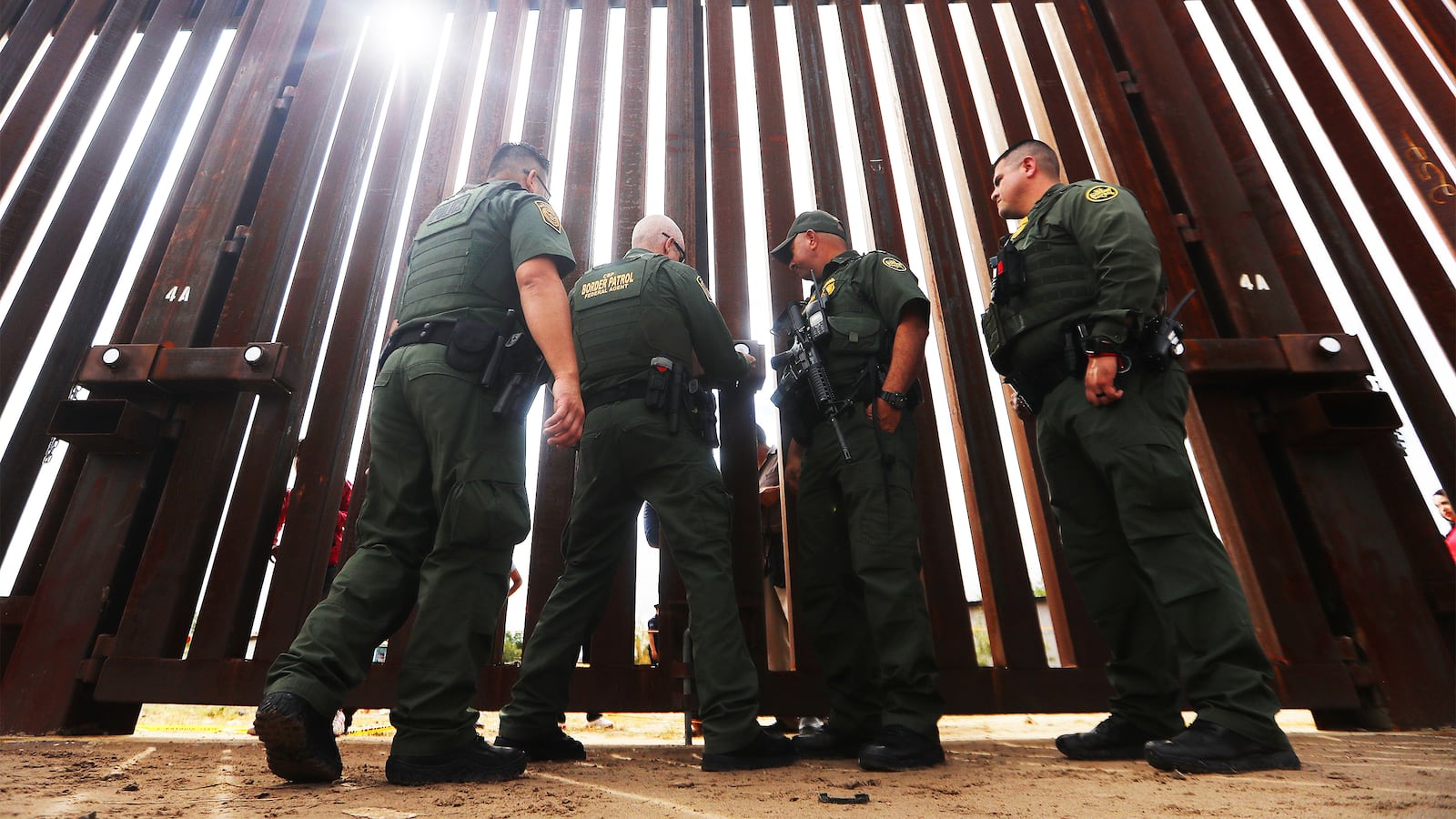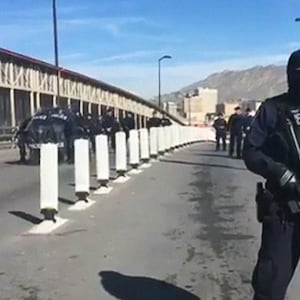EL PASO, Texas—Huddled in blankets on a crisp morning last Tuesday, Gerson Valeriano and Yossira Gil were first in line on the Paso Del Norte bridge from Mexico to apply for asylum in the United States. It was their eighth day waiting with more than 100 migrants for Border Patrol to let them pass an invisible line just five feet away to apply for asylum.
The Trump administration wants all migrants and refugees to apply for asylum this way thanks to an executive order issued Friday that will make migrants who illegally cross at places other than ports of entry like Paso Del Norte ineligible for asylum. The administration would ram more people into bottlenecks like Paso Del Norte without providing more capacity to process aslyum-seekers, immigrant advocates and attorneys say.

Yossira Gil and Gerson Valeriano wait on the Paso Del Norte bridge.
Justin Glawe/The Daily Beast“This administration is narrowing down their interpretation of who qualifies for asylum while literally physically preventing people from seeking asylum in the so-called right way,” said Alan Dicker, a volunteer with the Detained Migrant Solidarity Community in El Paso.
Trump achieves this by having federal law enforcement prevent migrants from entering the U.S. to claim asylum, often forcing them into making a difficult decision of whether to enter illegally. Doing so after the executive order is signed will make them ineligible for asylum.
The 100 migrants in line behind Valeriano and Gil—about half of them children—would wait even longer to apply for asylum, if they made it at all. Most wouldn’t, because Mexican immigration authorities kicked the migrants off the bridge on Friday afternoon, an advocate in El Paso told The Daily Beast.
CBP said in a statement it put officers on the bridge to “ensure that arriving travelers have valid entry documents in order to expedite the processing of lawful travel. That being said, CBP processes undocumented persons as expeditiously as possible without negating the agency's overall mission, or compromising the safety of individuals within our custody.”
But even when there isn’t a line—as was the case in June, at the height of the family separation crisis—migrants are sometimes told by Border Patrol agents that there is “no room” in processing centers at ports of entry like Paso Del Norte. Both in June and in recent weeks, agents have stood at the apex of the bridge here, preventing migrants from physically entering United States territory where the government will then be legally required to process them for asylum if they simply say the word, asilo.
The Department of Homeland Security’s Office Inspector General confirmed these “turnbacks” after having denied it over the summer. The inspector general’s office noted that the practice sometimes resulted in migrants crossing illegally.
“If you are physically present in the U.S. you can apply for asylum, which is why [Customs and Border Patrol] has gone out of its way over the summer and now to prevent people from entering,” said Iliana Holguin, an El Paso immigration attorney.
CBP said its facilities were not “designed to hold hundreds of people at a time who may be seeking asylum” and that “as in the past when we’ve had to limit the number of people we can bring in for processing at a given time, we expect that this will be a temporary situation.”
Trump’s executive order seeks to bar those who enter illegally from applying for asylum. Instead, they’ll have to seek other forms of relief from deportation, proving that they have a “reasonable fear” of persecution in their home countries as opposed to the much lower threshold of “credible fear” that’s required as part of asylum cases, Holguin said.
“Those protections are much more difficult to obtain, have a much higher burden of proof, and are much, much harder to prove than asylum claims,” Holguin said.
Attorneys for every migrant who fails a reasonable fear interview and is processed for deportation, Holguin said, will almost surely file appeals and lawsuits on their clients’ behalf alleging Trump’s order is in violation of U.S. law. Those cases will be in addition to the lawsuits that will be filed by aid and advocacy organizations as soon as the executive order is entered into the federal register.
“I don’t think Trump understands, and I don’t think he cares, that this will not reduce the caseload in immigration court but increase it,” Holguin said. “Like sending troops to the border, I think he’s doing this for show. I think he’s doing it to look tough against desperate migrants who are fleeing violence and poverty.”
Instead of sending troops to the border, Holguin, Dicker and others say, the Trump administration should be allocating more resources to process asylum claims to reduce the backlog at ports of entry like Paso Del Norte.
“The administration is not interested in solving this complex humanitarian situation that is forcing families and children to flee for their lives and come to our border,” Greg Chen of the American Immigration Lawyers Association told The Daily Beast. “It’s a gross waste of American taxpayer dollars to deploy thousands of troops to the border instead of doing what would really address the problem, which is sending more asylum and refugee officers to screen the vulnerable people that are arriving.”
Valeriano and Gil fled Honduras because of rampant violence there. After a few years living in Mexico, the pair took a bus to Juarez, where they got in line with hundreds of other migrants from South America, Cuba and elsewhere.
“I believe that God has the power to give us the opportunity to be an American,” Valeriano said.








